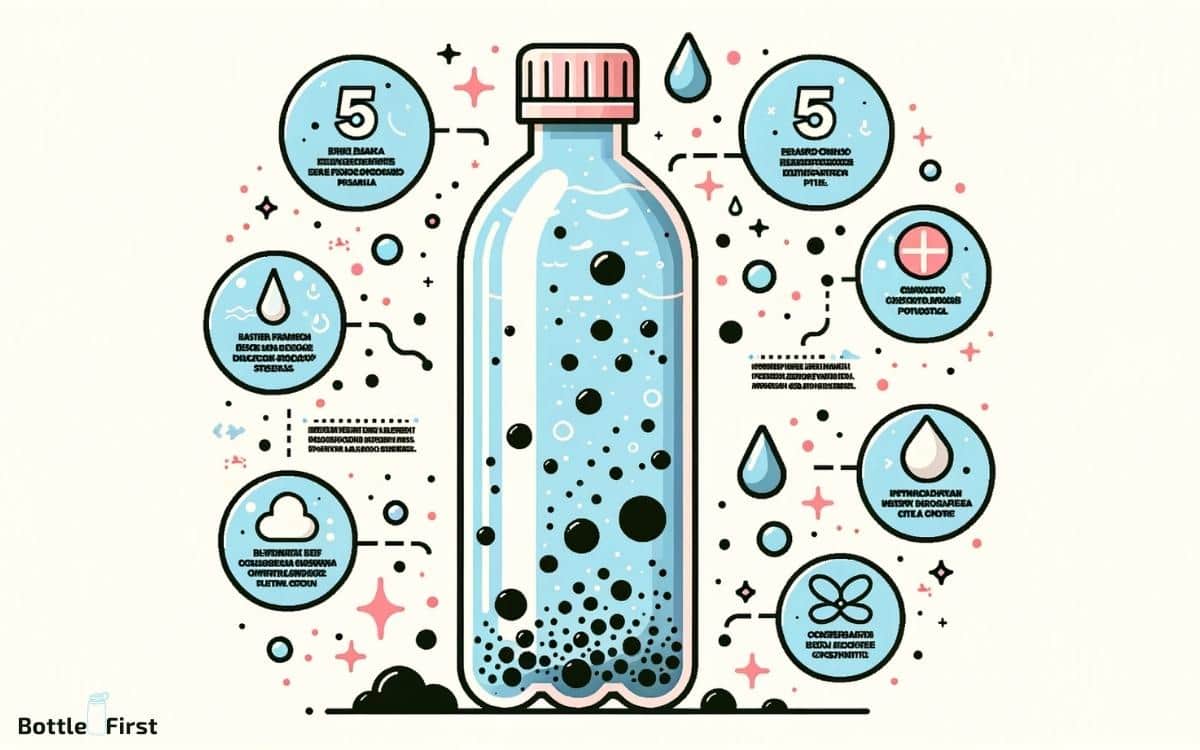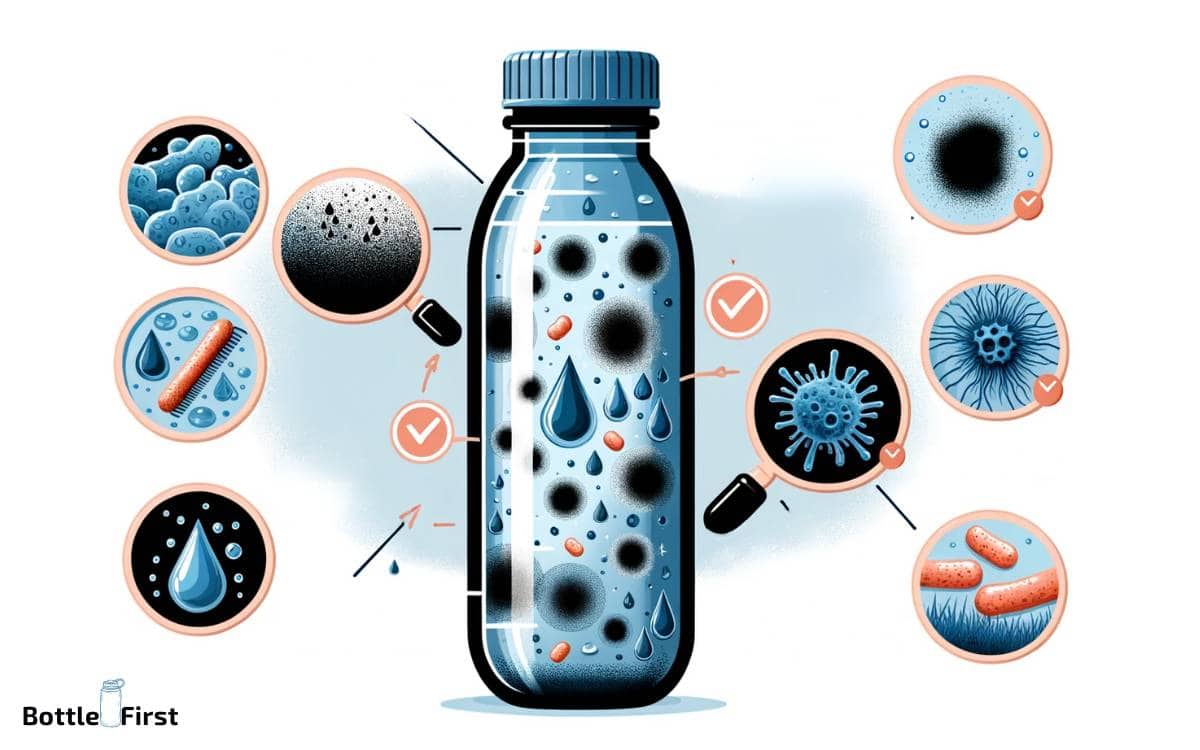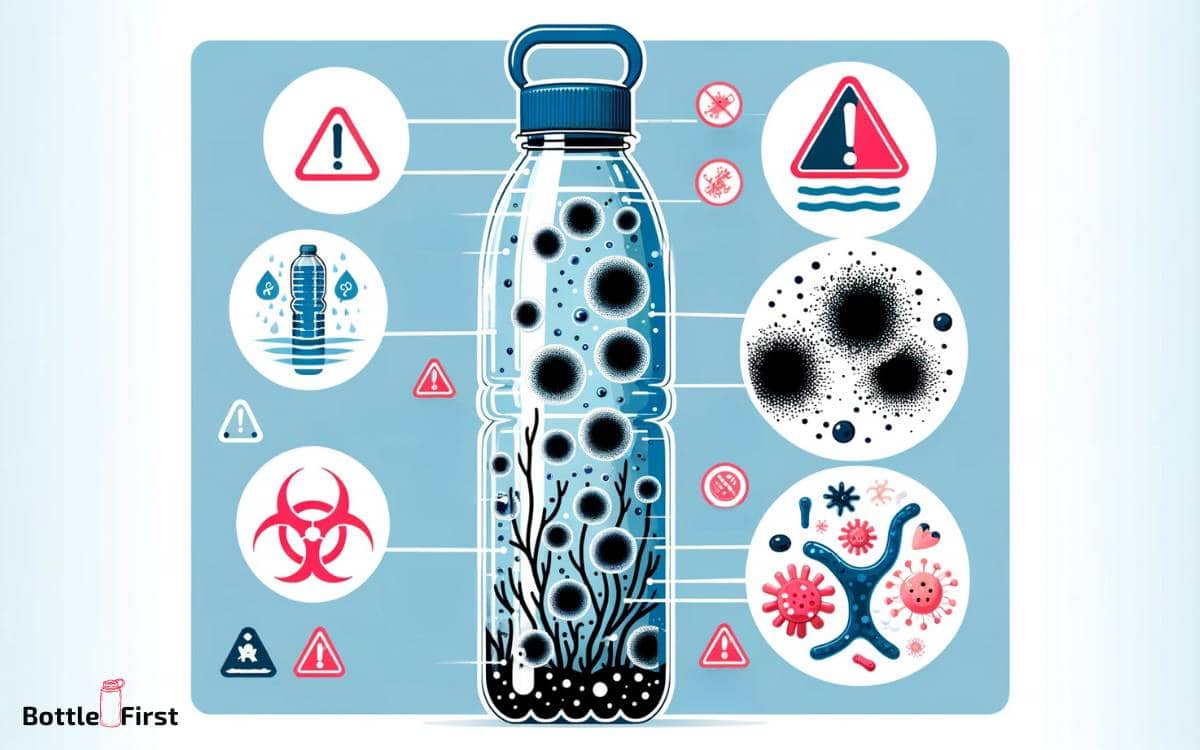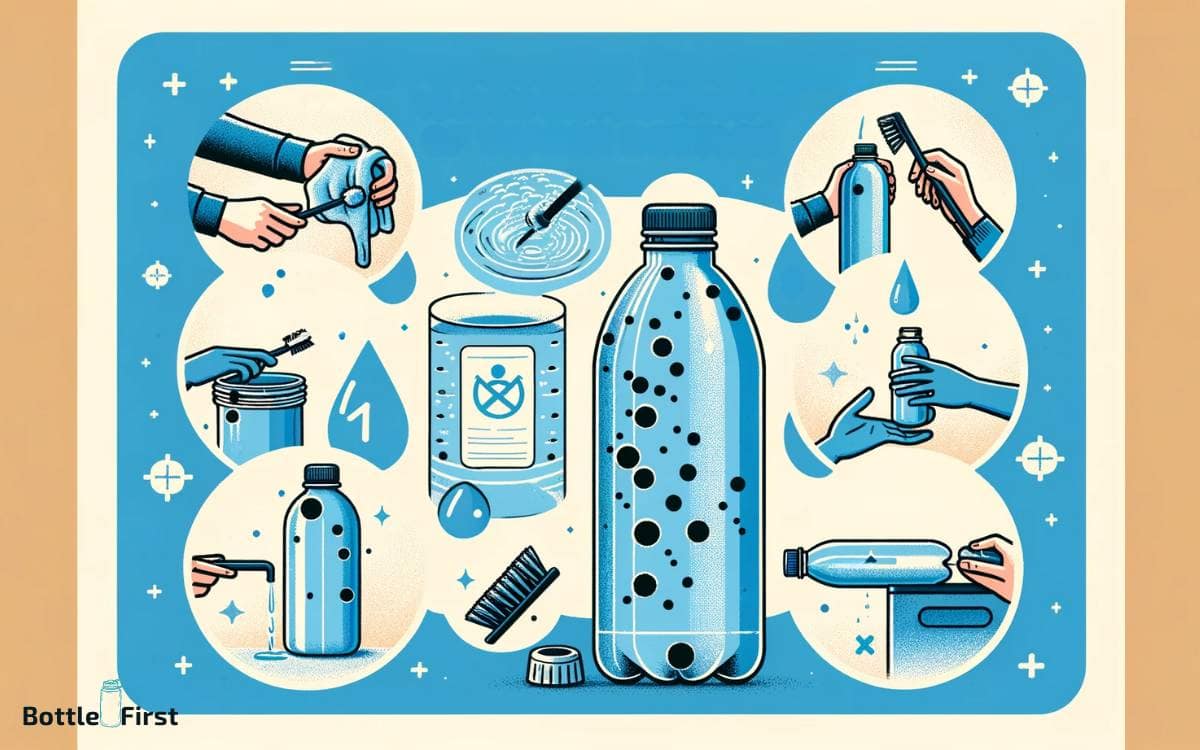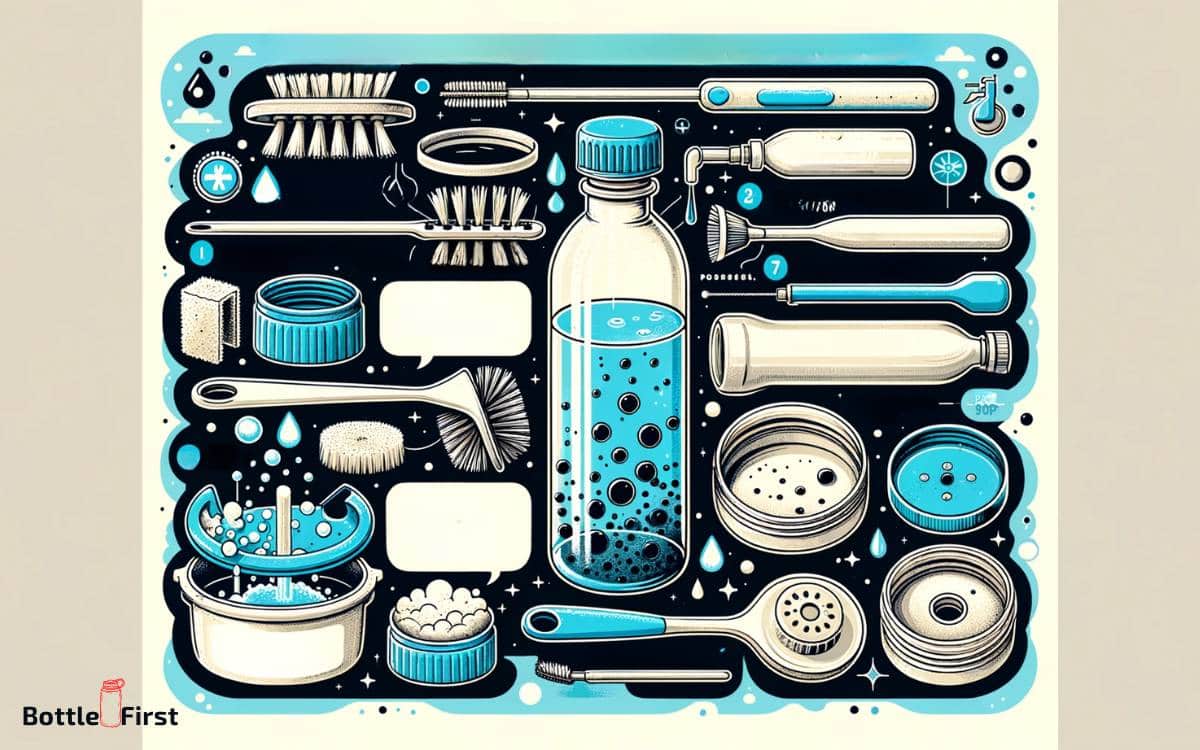Why Does My Water Bottle Have Black Spots? 5 Reasons
Black spots on your water bottle are typically mold or mildew, which can develop when moisture and bacteria are trapped for extended periods. Regular cleaning and drying can prevent their growth.
Black spots inside a water bottle are often a sign of mold or mildew growth. These fungi can grow in moist environments where there is a lack of airflow, such as a sealed water bottle.
The introduction of bacteria into the bottle from your mouth or external sources can also contribute to this problem.
Mold spores are everywhere in the environment and can quickly take hold on surfaces that are suitable for their growth.
To prevent mold and mildew from forming, follow these tips:
To maintain a clean water bottle and avoid the health risks associated with mold, implement a regular cleaning routine and ensure your bottle is dry before storing.
Key Takeaway
Understanding the Causes
Understanding the causes of black spots in your water bottle is essential for addressing the issue effectively. One common reason for these spots is the growth of mold and mildew due to improper cleaning and drying of the bottle.
These microorganisms thrive in moist environments, and the small, grooved areas of the bottle’s cap and lid provide an ideal breeding ground.
The presence of minerals and impurities in the water can lead to the formation of these spots. These particles can accumulate over time, especially if the bottle is not cleaned thoroughly.
Furthermore, exposure to sunlight and heat can promote the growth of bacteria and algae, resulting in the appearance of black spots.
Understanding these causes empowers individuals to take proactive measures to prevent their occurrence, ensuring a clean and safe drinking experience.
This understanding of the causes of black spots in your water bottle directly impacts hydration habits and overall health.
Impact on Hydration
The presence of black spots in your water bottle can significantly impact your hydration, potentially compromising your overall health and well-being.
Here’s how:
- Reduced Water Consumption: The sight of black spots may deter you from consuming water, leading to dehydration.
- Contaminated Water: Black spots could indicate the growth of mold or bacteria, making the water unsafe for consumption.
- Unpleasant Taste and Odor: The presence of black spots can taint the taste and odor of the water, making it unappealing to drink.
- Health Concerns: Consuming water from a contaminated bottle can pose health risks, causing illnesses and discomfort.
These factors not only affect your hydration but also raise concerns about the safety and quality of the water you consume.
Health Risks
The presence of black spots in a water bottle can indicate mold and bacteria growth. Mold and bacteria thrive in moist environments.
When present in water bottles, they can contaminate the water and lead to various health issues if ingested.
Therefore, it’s crucial to address these black spots to ensure the safety of the water and mitigate any health risks associated with their presence.
Mold and Bacteria Growth
As mold and bacteria can pose health risks, it is important to understand how they develop in water bottles.
Factors contributing to their growth include:
- Moisture: Residual moisture in the bottle provides a conducive environment for mold and bacteria to thrive.
- Organic Matter: Any organic material left in the bottle, such as juice or sweetened beverages, can serve as a food source for mold and bacteria.
- Warmth: Exposure to warmth, such as leaving the bottle in a sunny spot, can accelerate the growth of mold and bacteria.
- Infrequent Cleaning: Neglecting to clean the bottle regularly can lead to the accumulation of mold and bacteria over time, increasing health risks.
Innovative solutions such as self-cleaning water bottles or materials with antimicrobial properties are being developed to combat this issue, aiming to provide a healthier and safer water bottle experience.
Potential Health Hazards
Mold and bacteria present potential health hazards when they develop in water bottles. These microorganisms can lead to a range of health risks, including gastrointestinal issues, respiratory problems, and skin infections if consumed or exposed.
Mold can produce mycotoxins, which are harmful to human health, and bacteria such as E. coli or Salmonella can cause severe illness.
The presence of these contaminants can compromise the quality and safety of the water stored in the bottle, undermining the very purpose of staying hydrated.
Therefore, it is crucial to address mold and bacteria growth in water bottles to safeguard one’s health and well-being.
Understanding the potential health hazards associated with contaminated water bottles underscores the importance of implementing effective prevention techniques.
Prevention Techniques
To prevent black spots from forming in your water bottle, it’s important to adopt proper cleaning methods, such as using a bottle brush and mild detergent.
Additionally, consider storing your bottle in a well-ventilated area to discourage bacterial growth.
Lastly, be mindful of the materials your water bottle is made of, as certain types are more prone to developing spots than others.
Proper Cleaning Methods
Regularly cleaning your water bottle with hot, soapy water is essential for preventing the formation of black spots. Proper cleaning methods not only ensure the removal of existing spots but also prevent their recurrence.
To achieve this, consider the following techniques:
- Use a long-handled bottle brush to reach all areas of the bottle.
- Rinse the bottle thoroughly after each use to remove any residual liquids.
- Consider using a mixture of vinegar and water for a deep clean once a week.
- Allow the bottle to air dry completely before sealing it to prevent the growth of mold and bacteria.
Storage Tips
Frequently ensuring proper storage of your water bottle is crucial in preventing the development of black spots.
To keep your bottle pristine, follow these innovative storage tips:
| Storage Tip | Description |
|---|---|
| Keep it dry | Ensure the bottle is completely dry before storing to prevent mold growth. |
| Avoid direct sunlight | Prolonged exposure to sunlight can create a conducive environment for mold and bacteria. Store in a cool, dark place. |
| Use breathable containers | Opt for storage containers that allow air circulation to prevent trapped moisture. |
| Clean storage area | Regularly clean the area where the bottle is stored to prevent contamination. |
| Rotate bottles regularly | If storing multiple bottles, rotate their use to prevent prolonged stagnation. |
Material Considerations
When considering material for water bottles, selecting non-porous and easily cleanable surfaces, such as stainless steel or BPA-free plastics, can greatly aid in preventing the formation of black spots and maintaining overall cleanliness.
- Stainless steel: Resistant to corrosion and easy to clean, providing a sleek and durable option.
- BPA-free plastics: Lightweight and versatile, offering convenience without compromising safety.
- Glass: Provides a non-reactive and easy-to-clean surface, ensuring purity and maintaining the water’s taste.
- Silicone: Flexible and non-stick material, making it easy to clean and preventing the accumulation of residue.
These materials not only prevent the formation of black spots but also promote a hygienic environment, aligning with the demand for innovation in water bottle design.
Cleaning and Maintenance
To prevent black spots from forming in your water bottle, it is essential to maintain a regular cleaning and maintenance routine.
Consider using innovative cleaning tools such as bottle brushes with silicone bristles or sponges with built-in scrubbers to reach all areas of the bottle.
For a thorough clean, use a mixture of warm water and mild dish soap, or a solution of water and white vinegar, and let it sit for a few hours before rinsing. Some water bottles are dishwasher-safe, ensuring a deeper clean and disinfection.
It’s important to pay attention to any specific cleaning instructions provided by the manufacturer to preserve the integrity of the bottle.
By incorporating these innovative cleaning techniques into your maintenance routine, you can effectively prevent the formation of black spots and ensure a clean, hygienic water bottle.
Conclusion
Black spots in water bottles can be caused by a buildup of bacteria and mold, posing potential health risks and impacting hydration.
It is important to regularly clean and maintain water bottles to prevent the formation of these spots.
By implementing proper prevention techniques, such as using bottle brushes and cleaning solutions, individuals can ensure their water bottles remain clean and safe for use.
Maintaining a clean water bottle is essential for staying healthy and hydrated.
